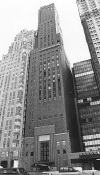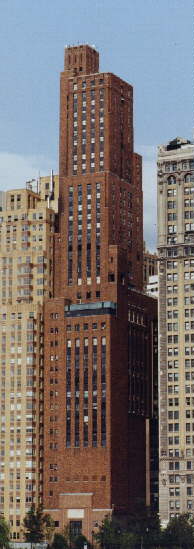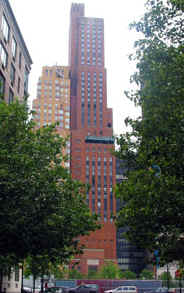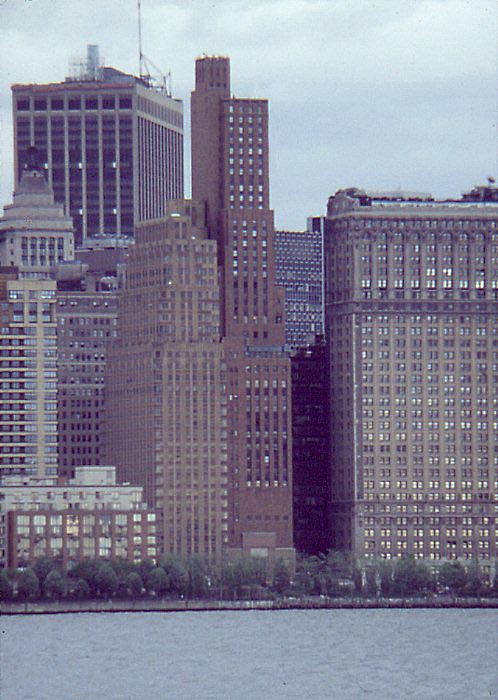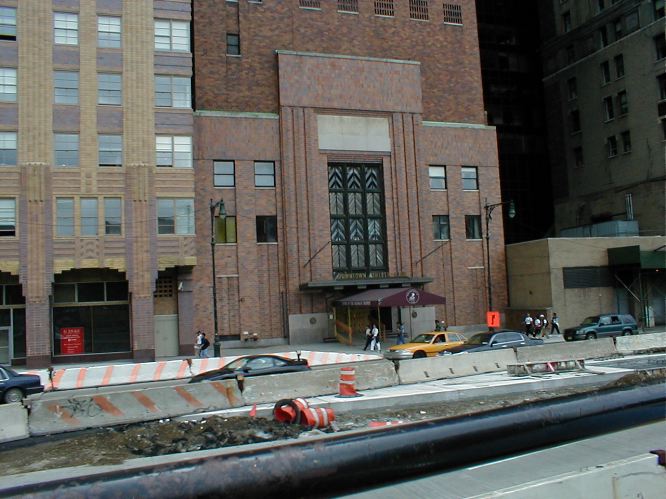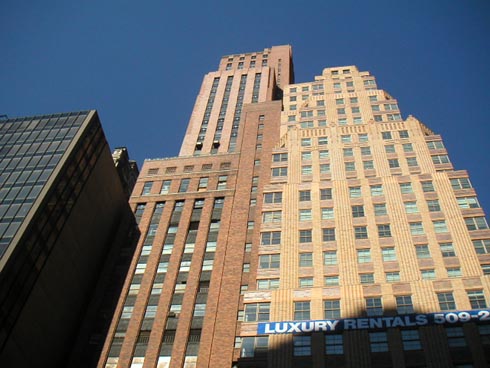NEW YORK -- The red awning still
hovers over the sidewalk at 19 West Street, claiming this
73-year-old Art Deco building as the official "Home of the Heisman."
But the canopy is dirty and faded. It's dwarfed by blue scaffolding.
And the doors to enter the building are boarded up.
Around the back, under another
discolored "Home of the Heisman" covering, a set of glass doors is
accessible. But they're filthy, slathered in 20 months of dirt and
fingerprints. Tentacles of cracks cascade down the soiled panes.
|
|
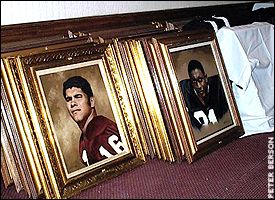 |
|
Heisman portraits will be placed in storage, but for now
lean against a second-floor wall. |
There was a time when this address was
the center of the nation's sports focus. One winter weekend each
year, a handful of the best college football players in the country
would hop out of limousines, walk into the building and hope to walk
out with the most prestigious individual award in sports.
But that will never happen again.
At least not here.
Plagued by financial troubles since
the Sept. 11 terrorist attacks leveled the nearby World Trade
Center, the Downtown Athletic Club turned over its mortgage last
week to this New York landmark, alleviating itself of escalating
debt but leaving the Heisman all but homeless.
There are now 60 days to clean up,
pack 68 years of history into cardboard boxes and move out. It isn't
easy. At the deeding of the property last week, DAC president Jim
Corcoran said he nearly backed out of the mortgage deal.
"My attorney said, 'What are you
doing?' " said Corcoran, who also serves as a senior vice president
at Morgan Stanley. "This is what everybody agreed on. This is what
we voted on. But it was hard to do. It felt like something was being
torn out of my heart."
The award, of course, will still go
on. Funded largely by the annual Heisman dinner and income generated
by the award's presenting sponsors, its future is as strong as ever.
The same Downtown Athletic Club personnel will be in charge. But the
club itself, which opened its doors in 1930 and five years later
created the award, will be all but gone.
Truth be told, things haven't been
the same since Sept. 11. Though the Heisman still had a home, the
DAC never reopened. Damage from the destruction of the World Trade
Center towers forced the club to move the 2001 Heisman ceremony to
the Marriott Marquis in Times Square. The Yale Club hosted the event
last year and will do so again this December.
"It's kinda like going to high school
somewhere and then going back 30 years later and there's a mall
there," 1973 Heisman winner John Cappalletti said. "That's what it
will be like. There's a lot of emotional ties to that place. Without
that building, it won't be the same."
|
|
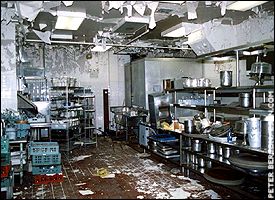 |
|
The 73-year-old DAC building needs over $20 million in
renovations. |
Yet if anybody could see the 38-story
building now, they'd understand. Paint peels away from nearly every
wall in every room. Some ceilings are pockmarked by giant holes and
brown watermarks, evidence of exploded water pipes. Other rooms,
which have barely been touched in two years, smell musty and stale.
The elevators only work sporadically, sometimes stranding passengers
between floors.
The Heisman room itself shows little
sign of change, except for the absence of the famed Heisman
portraits. They lean against a second-floor wall in an old banquet
room, waiting to be wrapped into black and white cloths and placed
into storage.
"Every time I open another box or
walk into another room, it's another flood of memories," said Rudy
Riska, the director of the Heisman foundation and a 43-year employee
of the Downtown Athletic Club. "That's probably what's the hardest."
When the club opened in 1930, it was
designed as both a fitness club and a social club for the elite.
Facilities included a 137-room hotel, seven banquet rooms, one
dining room, a state-of-the-art fitness center, a gymnasium, an
Olympic-sized swimming pool and squash, handball and racquetball
courts. At the time, the 12th-floor pool was the highest elevated
aquatics facility in the world.
The club peaked at 4,500 members in
the 1960s, but has seen a 78 percent decline since. In 1999, the DAC
narrowly avoided bankruptcy by selling the building to a Stamford,
Conn., investment firm a day before it was to be put on the auction
block.
The firm then turned around and sold
floors 1-13 -- essentially the Heisman room, the athletic facilities
and a couple of banquet rooms -- back to the DAC, allowing for a
rebuilding plan to be put in place. But just when the club was about
to finalize a deal with a club management company to run the
facility, plans changed when terrorists crashed two airliners into
the World Trade Center, which used to stand just two blocks away.
|
|
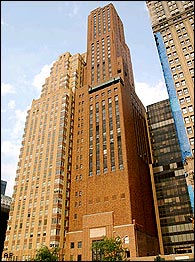 |
|
Once a gathering place for the elite, financial trouble has
forced the Downtown Athletic Club to close its doors. |
At the time, the upper floors of the
building were being gutted and all of the windows -- from the 14th
floor to the 38th -- were open for added ventilation. When the two
towers collapsed, dust and debris flooded the open rooms,
overwhelming the building's air ducts.
The building escaped structural
damage, yet still needed about $20 million to $30 million in
renovations. It never reopened. And each month that has passed,
Corcoran said, the club has lost about $100,000, falling further and
further into debt.
The club solicited help from its
members, but only 200 of the 900 letters it sent out were answered.
Later, the club invited 500 members to a financial meeting to
discuss the club's future. Sixty showed up.
"It's understandable -- people's
priorities changed that day," said Rob Whalen, coordinating director
of the Heisman Trophy and a former DAC athletics director.
"Companies were leaving downtown. Businesses were closing. People
were more concerned about losing loved ones and getting their lives
back together than they were about membership in a club."
And despite the deep pockets of
several former Heisman winners, the DAC had little interest in
reaching its hand out and asking for donations.
"I think a lot of them associate
themselves more with the trophy than the club," Whalen said. "And
for us to ask any of them to just hand a private club a couple
million just wasn't right."
So last month, in the same lobby that
Davey O'Brien, Doak Walker, Hopalong Cassady and Herschel Walker
once celebrated, 60 members of the club decided to turn over the
lease to the mortgage holders, erasing all outstanding debts.
"For a lot of us, that place was like
a second home," said 1969 Heisman winner Steve Owens. "Getting stuck
in the elevators, hearing the radiators popping, sitting in that old
bar -- that's what made it so special. But that place needed so much
work; it was just too expensive to keep up. So it's time to look to
the future."
For now, the four remaining employees
of the DAC, who also work with the Heisman, have 30 to 60 days to
vacate the building. Auctioneers and restaurateurs already are
combing the facility, inquiring about everything from ice machines
and dishwashers to dining room chairs and salt-and-pepper shakers.
The club has donated thousands of dollars in exercise equipment to
the Boys Club of New York and the New York Fire Department. Anything
Heisman related is being packaged and put into storage.
|
|
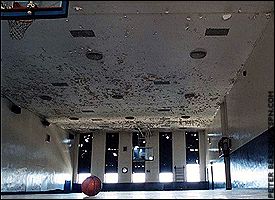 |
|
The DAC hopes its gym will host one final game to honor 11
members who died on 9-11. |
Riska already has opened a Heisman
office in a building next door. But before the club departs 19 West
Street for the last time, there are hopes for one final game. Though
the stairwells are dark, the paint is peeling and the club looks
more like a haven for the homeless than a clubhouse for Wall Street
execs, a handful of former club members want to organize a charity
basketball game to honor the 11 club members who died in the World
Trade Center attacks.
"If it's safe up there and we can get
it done, that's what we're going to do," Corcoran said. "It just
seems right."
There are even rumblings about
someday opening a new club in Battery Park City. A place with
state-of-the-art equipment and a Heisman museum. Perhaps the club
will be part of the new construction right at the Trade Center site.
Whatever the case, Corcoran is committed to keeping any new
facilities in downtown Manhattan, where it can be a vital part of
the city's post-Sept. 11 revitalization plan.
"You have to go to the bottom to come
back again," Corcoran said. "So that's what we're going to do --
let's just say the Heisman is on a road trip for a couple years
until we get it a new home."
Wayne Drehs is a staff writer for
ESPN.com. He can be reached at wayne.drehs@espn3.com.
